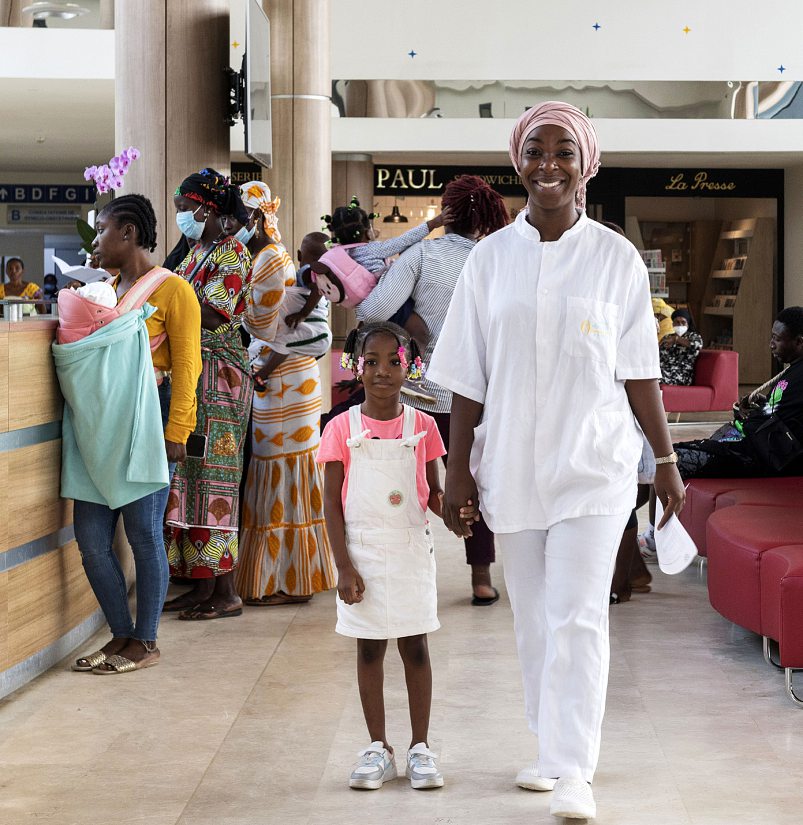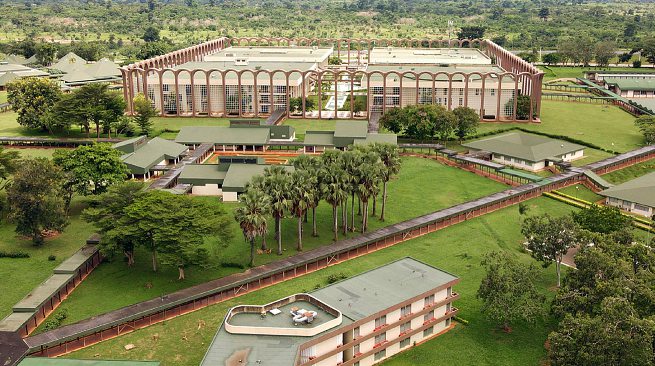Progress in numbers
Published on 25 April 2025 at 3:40 p.m. Development data and indicators make it possible to measure changes since 2011 and describe a young, dynamic country that is building itself, urbanising and diversifying its economy. However, it is also a country that has to meet the demands of growth: training, employment, inclusiveness and social protection.
A rapidly growing population

The fourth most populous country in West Africa, Côte d'Ivoire has experienced remarkable population growth, rising from 21.6 million inhabitants in 2011 to nearly 30 million in 2023, an increase of more than 33%. This rapid population growth poses many challenges in terms of infrastructure, housing, training and employment. All the more so given that the country has a median age of 23 and over 36% of the population is between 16 and 35 years old, providing a constantly replenished reservoir of young workers. While this may seem like a boon for economic development at first glance, these young people need special support, from basic education in primary school to university courses, vocational training and assistance with integration and entrepreneurship.
Life expectancy has also risen significantly, from 57.6 years in 2011 to 63.5 years in 2021. This increase can be attributed to substantial investment in medical facilities and advances in public health and disease control. Eight regional hospitals, eleven general hospitals and nearly 300 health centres have been built or renovated. Much-needed investment in medical equipment and technical facilities is continuing to bring healthcare closer to the population. Universal health coverage (CMU) has been in place since 2024.
At the same time, urbanisation has intensified, with the urban population growing from 10.3 million in 2011 to 15.3 million in 2023. Abidjan, home to 21% of the population, is on the front line. The economic capital, synonymous with opportunity, is particularly congested, and decentralisation projects, both administrative and economic, are flourishing again in the wake of the presidential debate that began in 2025.
An economy undergoing major changes
From an economic perspective, the major 2011 post-election political crisis is now a distant memory. The country has been transformed and its GDP has tripled in fifteen years, rising from $36.39 billion in 2011 to $78.79 billion in 2023. This economic dynamism has resulted in one of the highest growth rates in the world over the past fifteen years. It is based on a solid three-pronged approach: diversification, investment and infrastructure modernisation.
A closer look at GDP reveals a notable shift: the share of the primary sector (agriculture) fell from 25% to 15.2%, while the secondary sector (industry and trade) grew from 23.1% to 30%.
This trend reflects a firm commitment to industrialisation and the processing of raw materials within the country, objectives that are clearly set out in the various National Development Plans (NDPs) for 2012-2015, 2016-2020 and 2021-2025. These plans have been the instruments of the country's economic and social transformation. Following the same trajectory, the tertiary sector has grown from 40.2% to 45%, reflecting the boom in services. The considerable increase in the share of the secondary and tertiary sectors in GDP is an undeniable sign of economic development based on the emerging countries model, with the emergence, during the same period, of a new and large middle class capable of consuming the goods and services produced in the country. One sign is unmistakable: the proliferation of hypermarkets, supermarkets and shopping centres modelled on American malls, which are busy every day of the week.
Per capita GDP, estimated at $2,530, has propelled the country into the ranks of the most prosperous ECOWAS economies. Côte d'Ivoire has regained its position as the sub-region's ‘economic powerhouse’. And its performance has not gone unnoticed by the International Monetary Fund (IMF). The Bretton Woods institution has identified the country as one of the ten most promising African economies for the coming years.
Commitment to fighting poverty
Combating poverty is a major challenge for the government of Côte d'Ivoire. Although the poverty rate fell from 55.4% to 35% between 2011 and 2023 (the target is to reduce it to well below 30% by 2030), considerable disparities remain between urban and rural areas, with the latter being the most affected. The Human Development Index (HDI), which remains an indicator closely monitored by Ivorian and international stakeholders, improved from 0.445 in 2011 to 0.534 in 2023.
Education and training for young people: a major development challenge

Considerable investment has been made in young people. The government has been heavily involved in the education system since 2011: thousands of primary school classrooms and 648 secondary schools (junior and senior high schools) have been built to accommodate all young Ivorians under a compulsory education law passed in 2015, which makes school attendance compulsory for all children aged 6 to 16. It's a strategic vision that has resulted in the number of pupils enrolled in school doubling from 2.9 million in 2011 to 4.8 million in 2023. However, this optimistic picture needs to be put into perspective. First, the law on compulsory schooling will take time to bring about all the expected outcomes, mainly because the need for school infrastructure remains huge. Beyond ensuring access to education for as many people as possible (especially girls), the main challenge remains the quality of teaching. Teacher training, in particular, needs to be improved, and classes, which remain overcrowded despite investment, will have to be reduced in size. Lastly, another question mark hangs over the illiteracy rate, which remains abnormally high, fluctuating between 47% and 51% depending on the source.
Higher and vocational education has been the focus of considerable investment, including the construction of five new universities and three technical colleges. However, the labour market is still struggling to absorb the growing number of young people graduating from higher education. The Minister for Youth Promotion, Mamadou Touré, recently reported that 400,000 young people enter the labour market each year, while 100,000 jobs are created across all sectors during the same period. The issue of how to match training supply with the country's economic needs is on the agenda of all relevant government departments, and consultations with representative private sector organisations are well underway. Some large companies, in the oil and construction sectors for example, are keen to set up specific training programmes tailored to their needs in partnership with a few leading universities, such as the INPHB in Yamoussoukro.
Accelerated digital transition
The Internet has revolutionised everyday life in Côte d'Ivoire. From 2.9% in 2011, Internet penetration rose to nearly 89% in 2024, representing 29,170,000 subscribers for a population of just over 32 million. Driven by the same wave, mobile Internet use has also skyrocketed. According to the latest figures released in March 2025 by the head of government, Robert Beugré Mambé, there are 54.6 million mobile phone subscribers (bearing in mind that many Ivorians subscribe to multiple operators) in Côte d'Ivoire. This phenomenon does not prevent the existence of areas not covered by the Internet. There are between 529 and 559 ‘white areas’ in the country. The digital development plan aims to fill these gaps.
Modernised infrastructure
Roads pave the way for development. Since 2011, around 260 kilometres of motorways have been built, 1,500 kilometres of new inter-city roads have been constructed and paved, and more than 2,000 kilometres of existing paved roads have been upgraded, facilitating trade and bringing certain regions out of isolation. In the same vein, bridges and interchanges have been built throughout the country, reaching a total of 45 new structures since 2011. In addition, access to electricity has skyrocketed in the last 12 years. Coverage has tripled, rising from 33.1% in 2011 to 88% in 2023. This progress has been driven by electricity production, which has almost doubled, reaching 2,907 MW in 2023 compared to 1,391 MW in 2011, and by programmes that make electricity mandatory in villages with more than 500 inhabitants. These advances have equipped Côte d'Ivoire with one of the most developed and reliable electricity networks in the sub-region. Access to drinking water has also improved significantly, rising from 50% in 2011 to 80% in 2019, with the goal of achieving universal coverage by 2030.
The face of Côte d'Ivoire has changed over the past 15 years. However, challenges remain, such as reducing inequality, modernising the education system and improving youth employment. The pre-election presidential debates that are about to get underway will focus on President Ouattara's record in office. They should also offer new prospects for the people of Côte d'Ivoire.